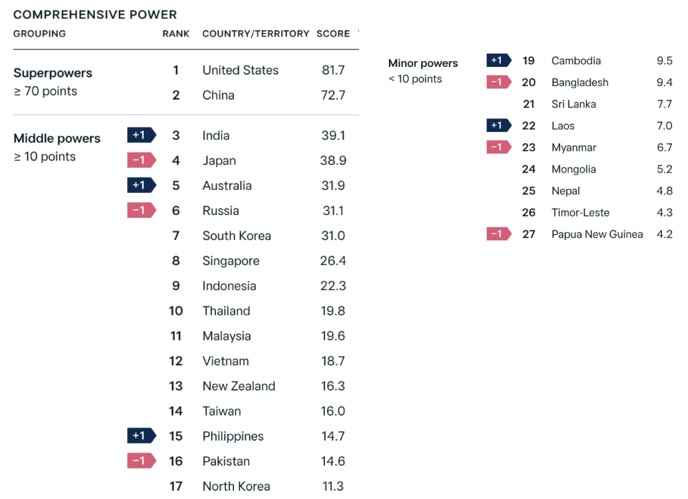7667766266
enquiry@shankarias.in
India has overtaken Japan to become the third most powerful country in Asia.
Power is the capacity of a state or territory to direct or influence the behaviour of other states, non-state actors, and the course of international events.
|
Asia Power Index Components |
|
|
Resources |
Influence |
|
Economic Capability |
Economic Relationship |
|
Military Capability |
Defence Networks |
|
Resilience |
Diplomatic Influence |
|
Future Resources |
Cultural Influence |
|
Asia Power Index - India |
|
